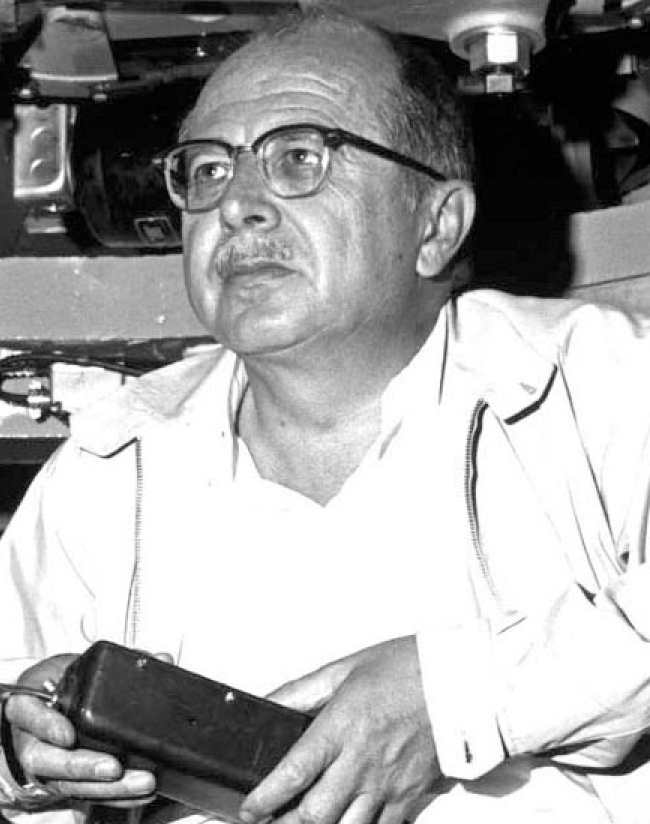Jesse Leonard Greenstein
DOI: 10.1063/1.1650245
Jesse Leonard Greenstein, a pioneering astrophysicist and founder of Caltech’s astronomy program, died on 21 October 2002 in Arcadia, California, three days after breaking his hip in a fall.
Jesse was born on 15 October 1909 in New York City into a typical prosperous, middle-class, Jewish family. He received his first telescope at age 8, and his family provided a variety of instruments with which he conducted experiments at home, especially in spectroscopy. At age 15, he entered Harvard University, where he received his AB in astronomy in 1929. For the next four years, he worked to save his father’s real estate business during the Great Depression.
As a Harvard undergraduate, he had taken courses primarily in classical astronomy, but by the time he enrolled as a graduate student, astrophysics was developing and he was much influenced by Donald H. Menzel and Cecilia Payne. His PhD thesis, supervised by Menzel, involved calculating the absorption and scattering processes for various possible sources of interstellar absorption and reddening. He earned his PhD in 1937.
Jesse then began a two-year postdoctoral fellowship at the University of Chicago’s Yerkes Observatory, where Otto Struve had assembled a staff of top-notch astronomers, including theoreticians. By arranging for the use of the 82-inch telescope at the McDonald Observatory, Struve gave his observational astronomers a chance at “big time” research, which until that time had been dominated by the Mount Wilson Observatory staff. With Louis Henyey, Jesse wrote several innovative papers on radiative transfer, and the two men cooperated in designing a wide-angle camera used by reconnaissance aircraft in World War II. Soon after the war, Jesse began to use the high-resolution spectrograph on the McDonald telescope to derive the abundances of elements in stars.
In 1948, Jesse moved to Caltech, where he founded a new department of astronomy and held the position of executive officer of astronomy until 1972. (See the article by Patrick Mc-Cray in Physics Today, October 2003, page 55
Because of his close friendship with William A. Fowler of the Caltech physics department, much of Jesse’s research and that of his postdocs concerned individual stars that showed unusual elemental abundances on their surfaces. In 1963, Jesse was one of five authors of a paper that called attention to the most metal-poor stars then known. In another paper, he and I analyzed the carbon stars of the Galactic Halo and showed that they were greatly enhanced in heavy elements produced by neutron captures within their own interiors. Convective mixing brought the resulting products to the stellar surface.
At the same time he was assembling his collection of high-resolution spectra, he carried out an independent program of spectroscopy of white dwarf stars. That research resulted in his fundamental paper, written with Olin J. Eggen and published in the Astrophysical Journal in 1965, on the spectra and colors of white dwarfs. In 1964, Jesse and Maarten Schmidt published in the Astrophysical Journal the basic paper on the redshifts of the recently discovered quasars. In that article, they showed that neither a gravitational redshift nor rapid recession of nearby objects could explain the data, hence the observed redshifts had to be due to the cosmological expansion of the universe.
In later years, Jesse continued to observe and interpret the spectra of white dwarfs. During much of his work on faint stars, he took advantage of the multichannel scanner developed by J. Beverly Oke for the five-meter telescope at Palomar Observatory. Use of the scanner enabled him to investigate the properties of very faint main-sequence stars, including the metal-poor subdwarfs of the halo population. Perhaps the most fascinating of the subdwarfs is the dwarf carbon star, G77-61, analyzed by Jesse and five others in 1986.
Jesse’s last research paper, entitled “An Atlas of Optical Spectra of White Dwarf Stars,” which he coauthored with six others, was published in the Publications of the Astronomical Society of the Pacific in 1993.
One of Jesse’s finest characteristics as a thesis and general research adviser was his ability to imbue younger people with the self-confidence to become independent scientists. It is particularly important nowadays to recognize the value of such encouragement, especially when new postdocs join groups of 20 or 30 scientists on a single project, yet a postdoc’s name likely will not be listed as first author unless it happens to begin with an A.
Jesse was a member of many government advisory committees, including one whose purpose was to evaluate whether nuclear weapons should be used to break the stalemate in the Korean War. The committee advised against such use, I am pleased to note, given that I was not far from the front lines at the time.

CALTECH PUBLIC RELATIONS PHOTO FILES

More about the Authors
George Wallerstein. University of Washington, Seattle, US .
